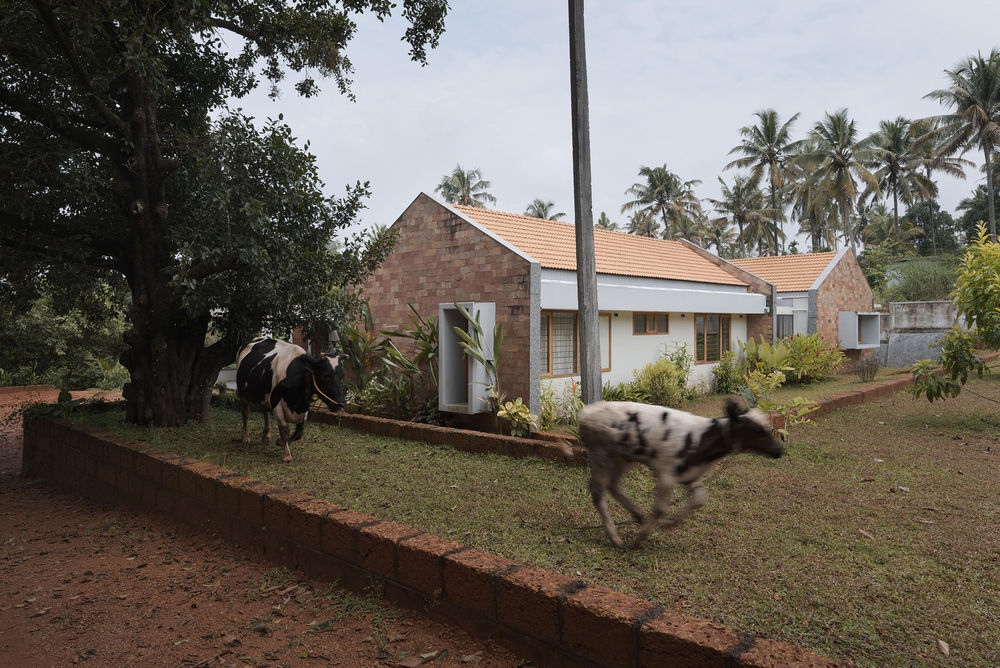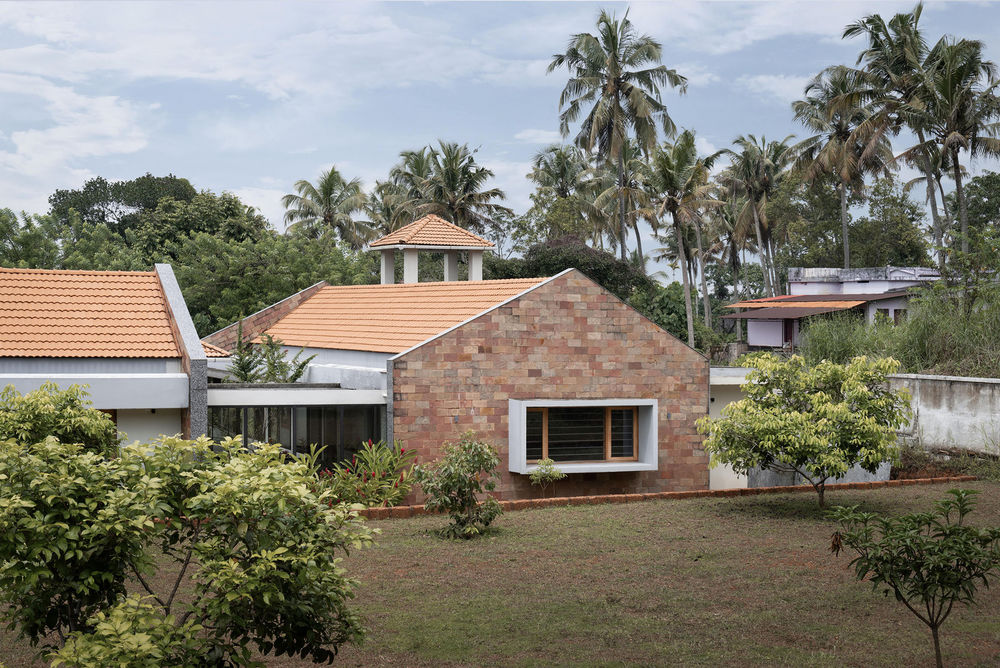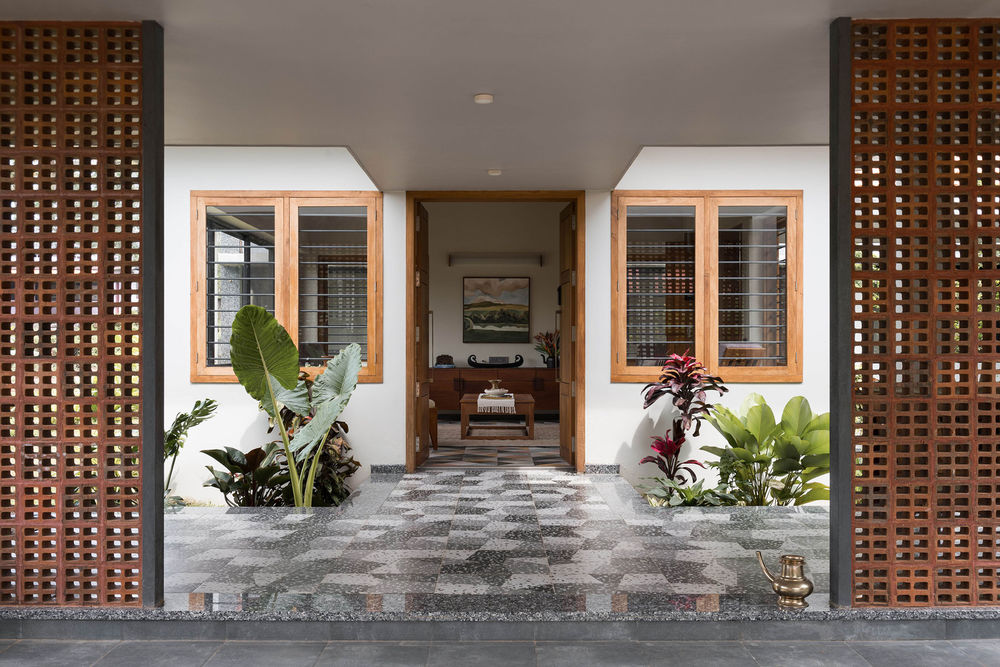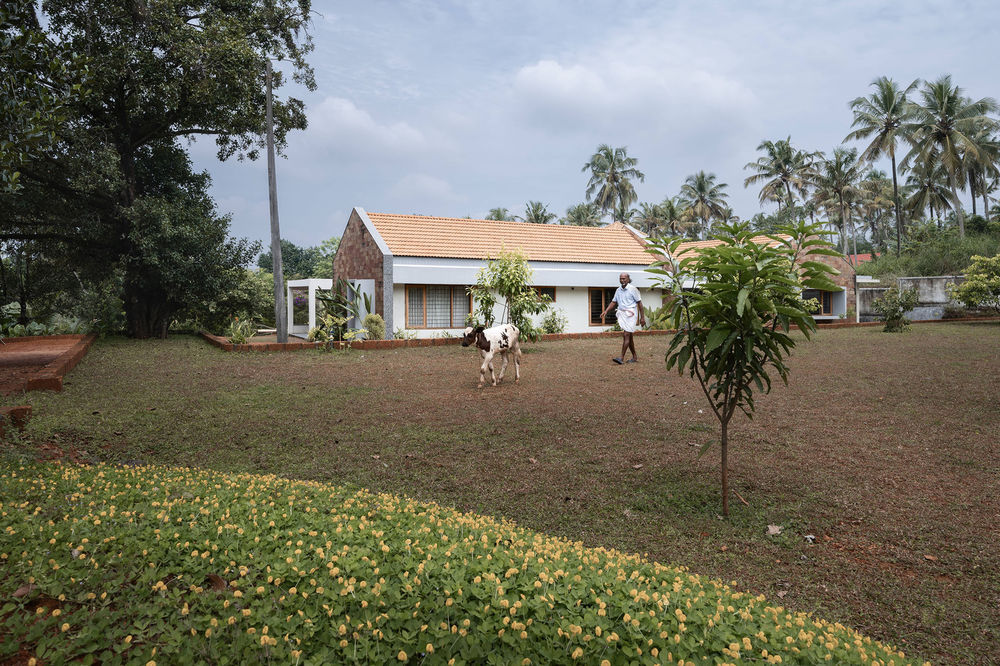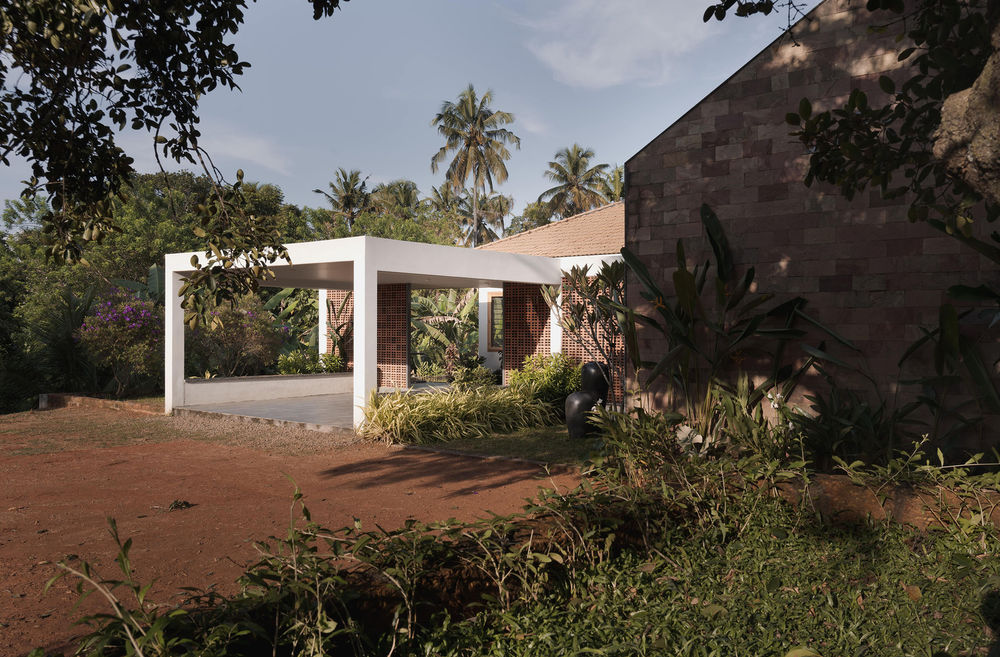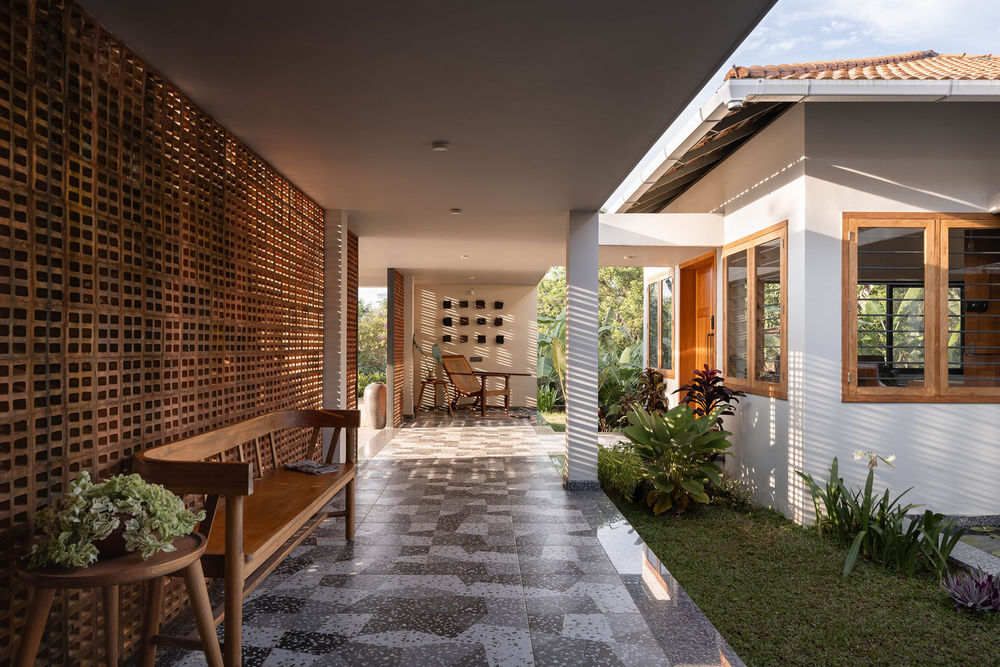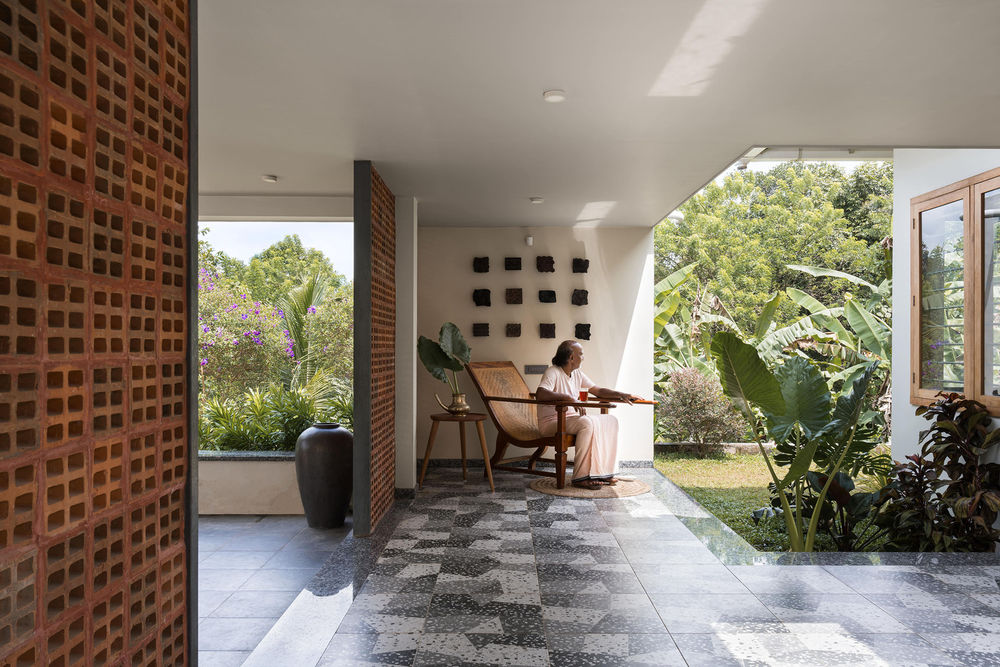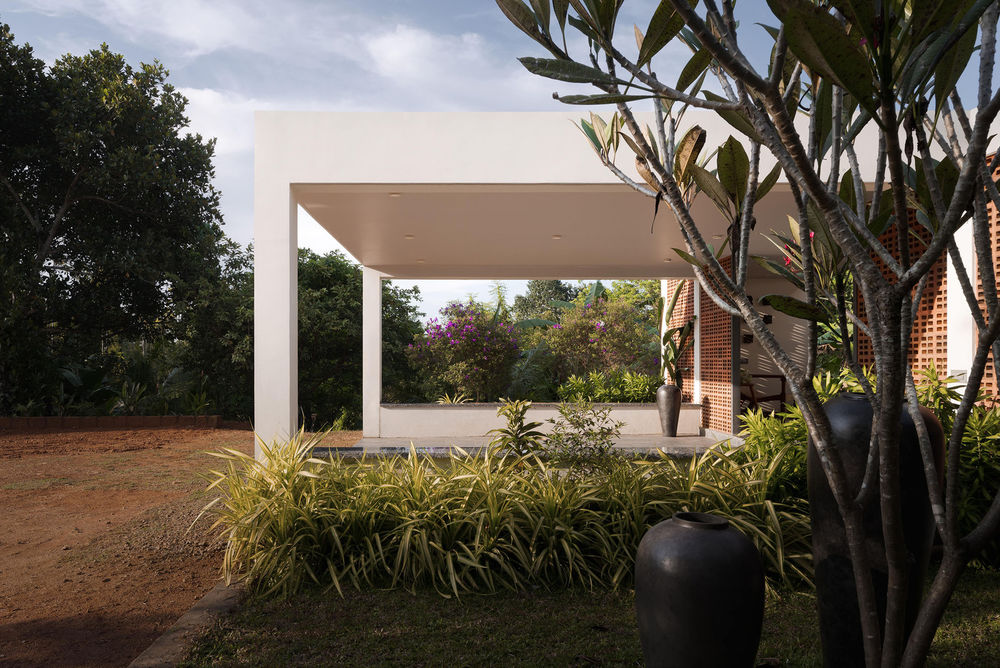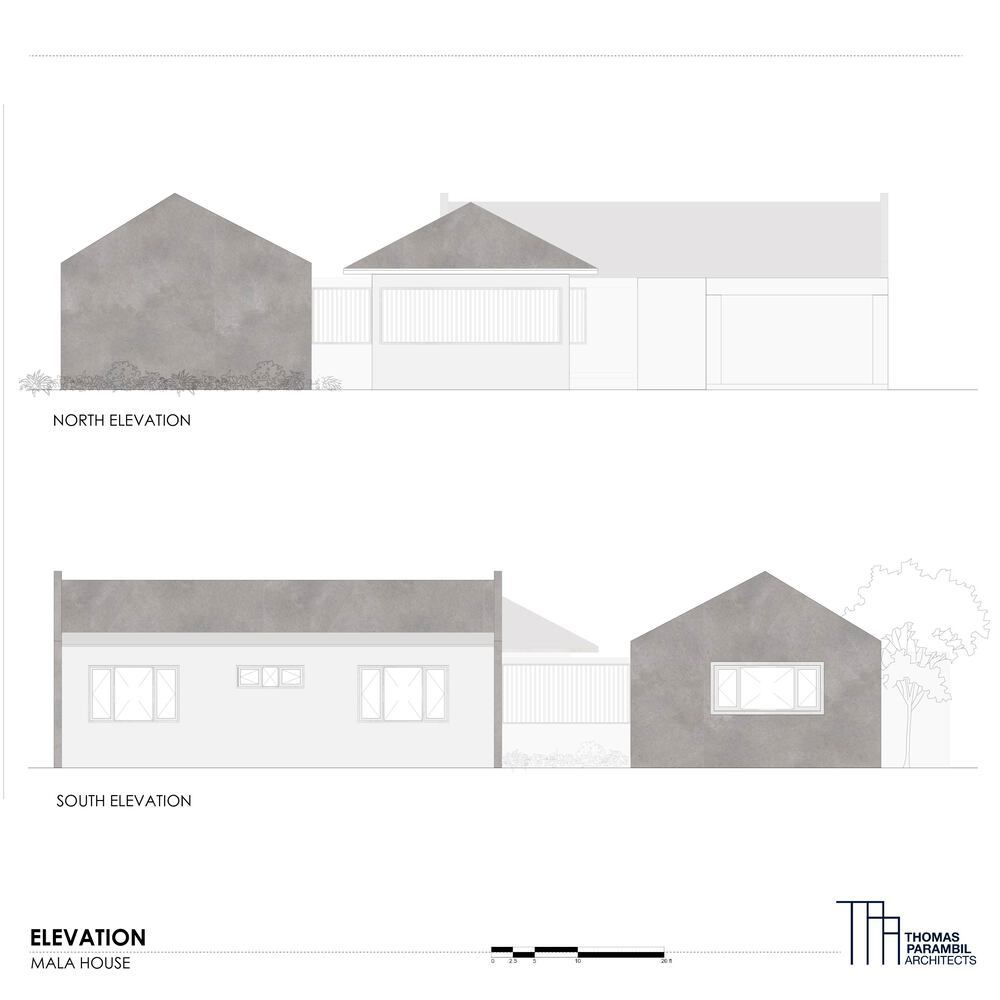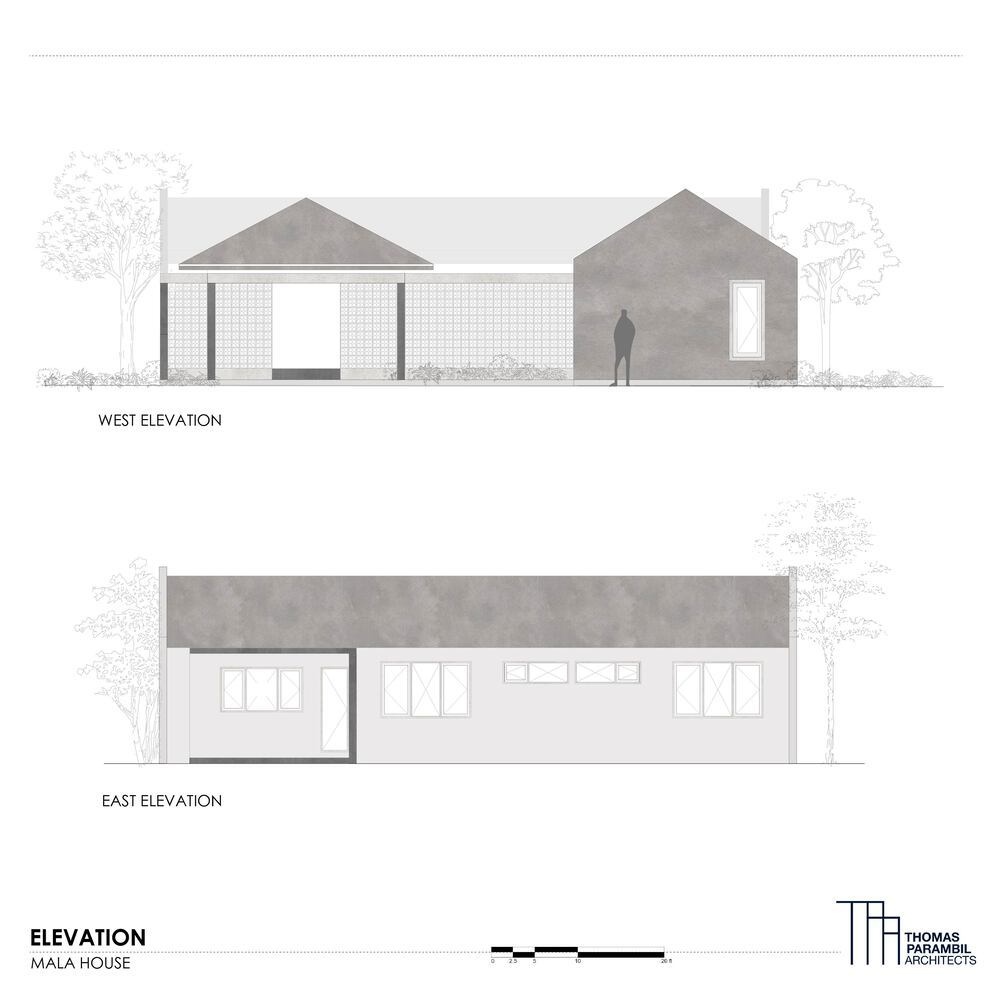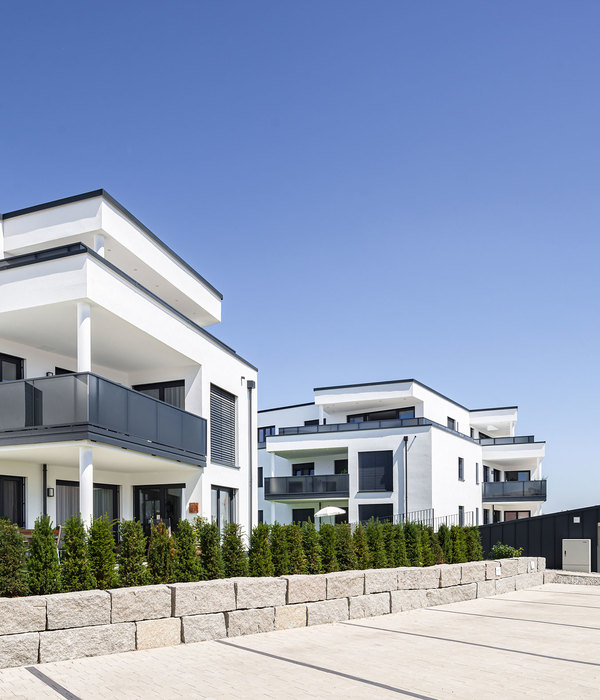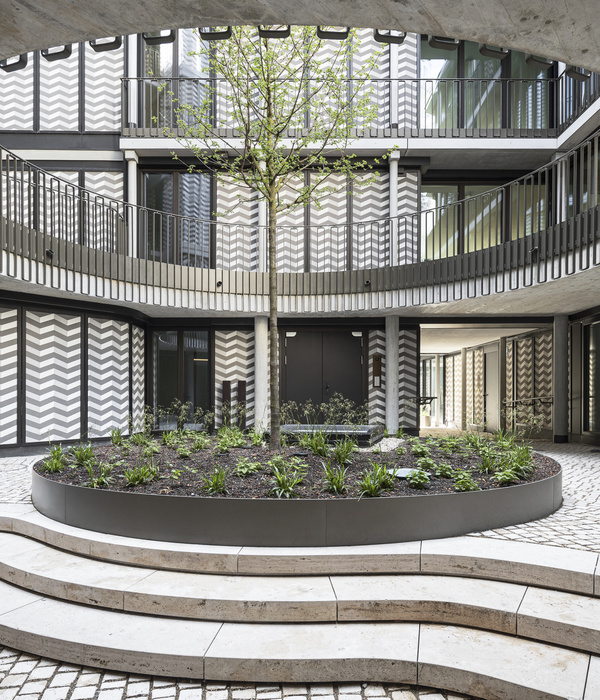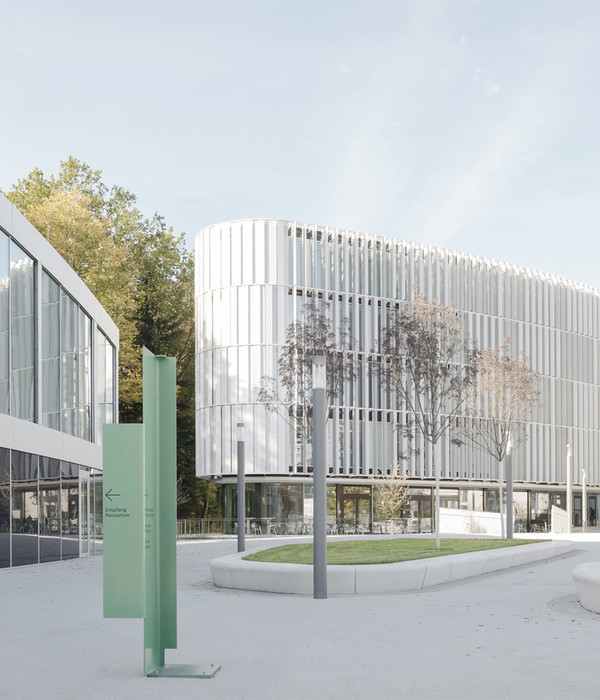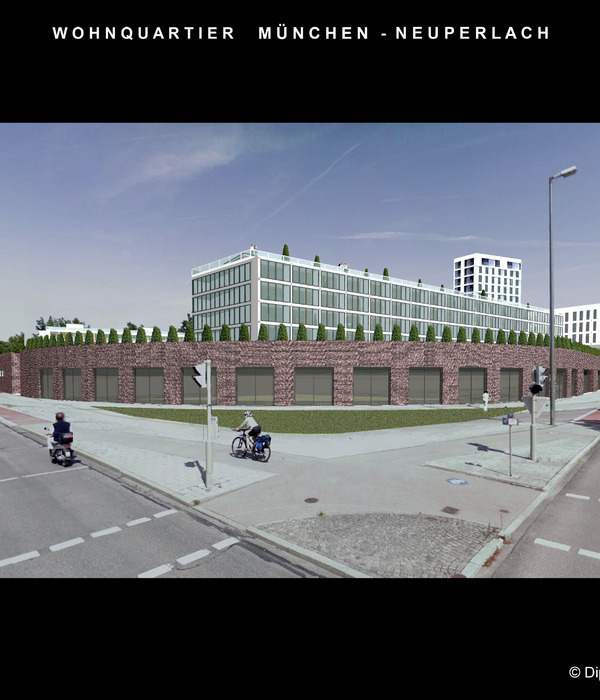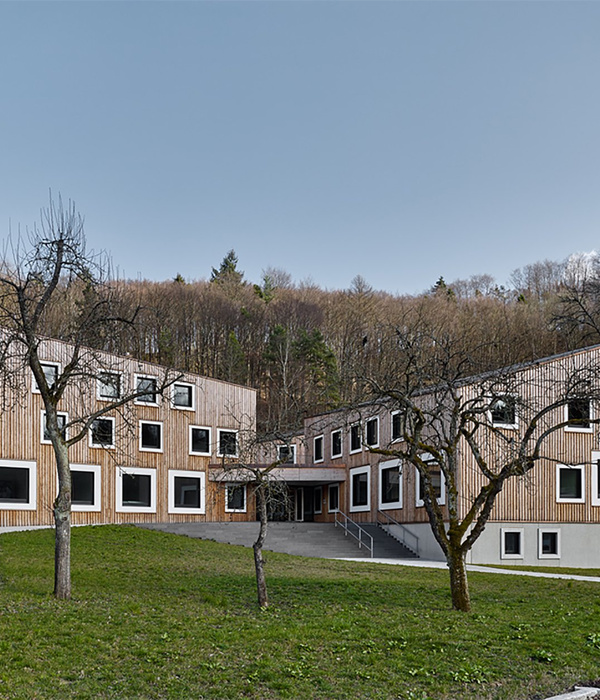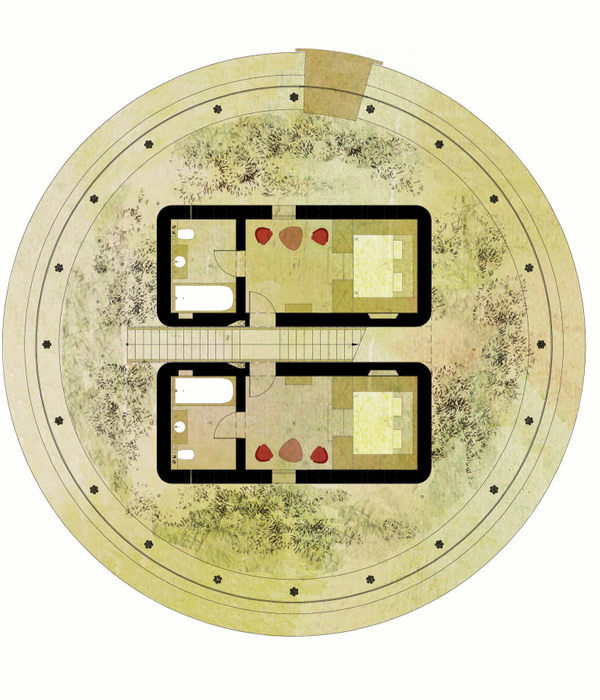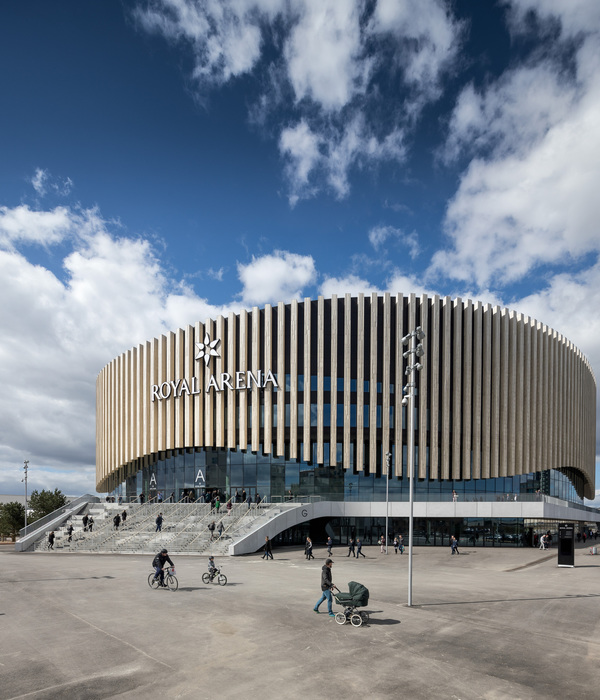绿意环绕的现代乡村住宅——Mala House
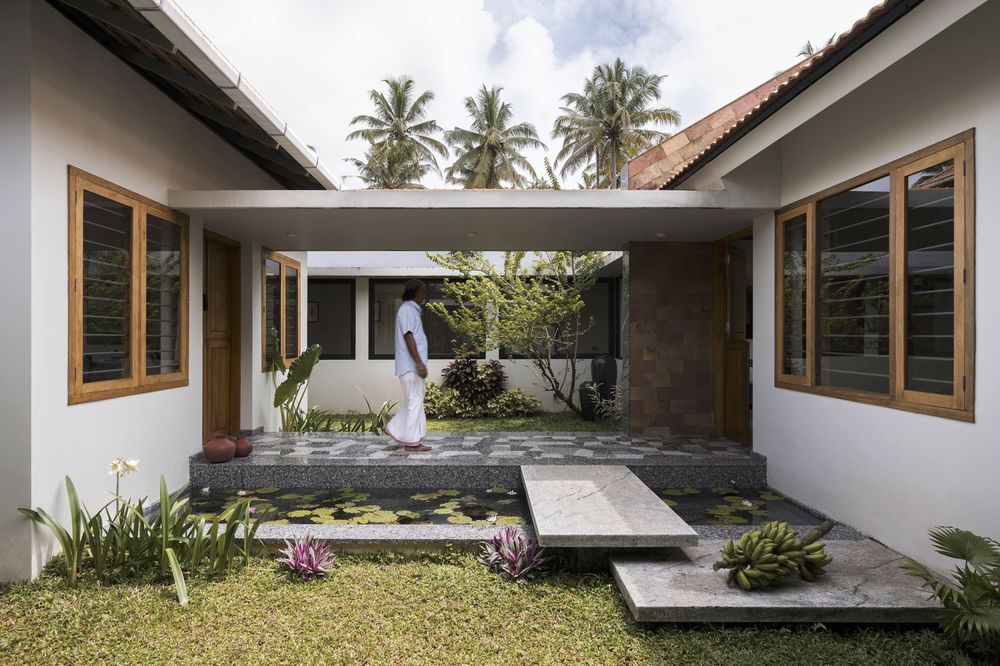
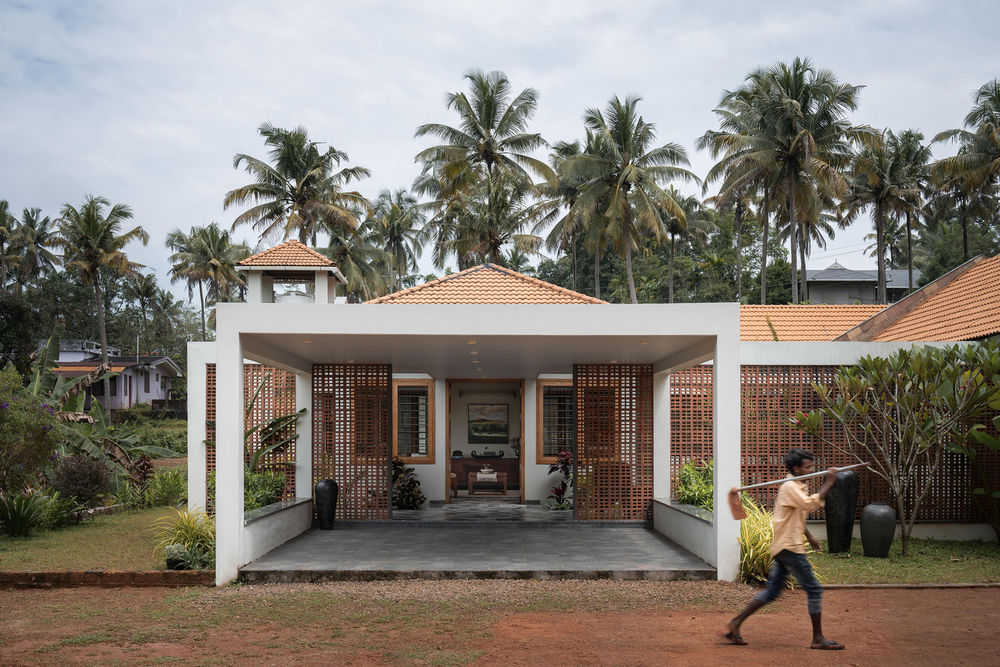
“Nostalgia” embodies that innate human need to stay connected to nature. The setting is commensurate with this desire: it sits ensconced within the tropical lushness of a rural area in Kerala’s Thrissur district, drawing its energy from the green milieu and the crisp, unpolluted air. The site on which a road on the south binds the 2700-square-foot home stands. From here, the land gradually slopes towards the north.
takes advantage of this gradient, sitting gently on the incline such that only the roof and some part of the fenestration are visible from the road. This reduces the visual scale of the built-form, helping it meld with the rustic surroundings.

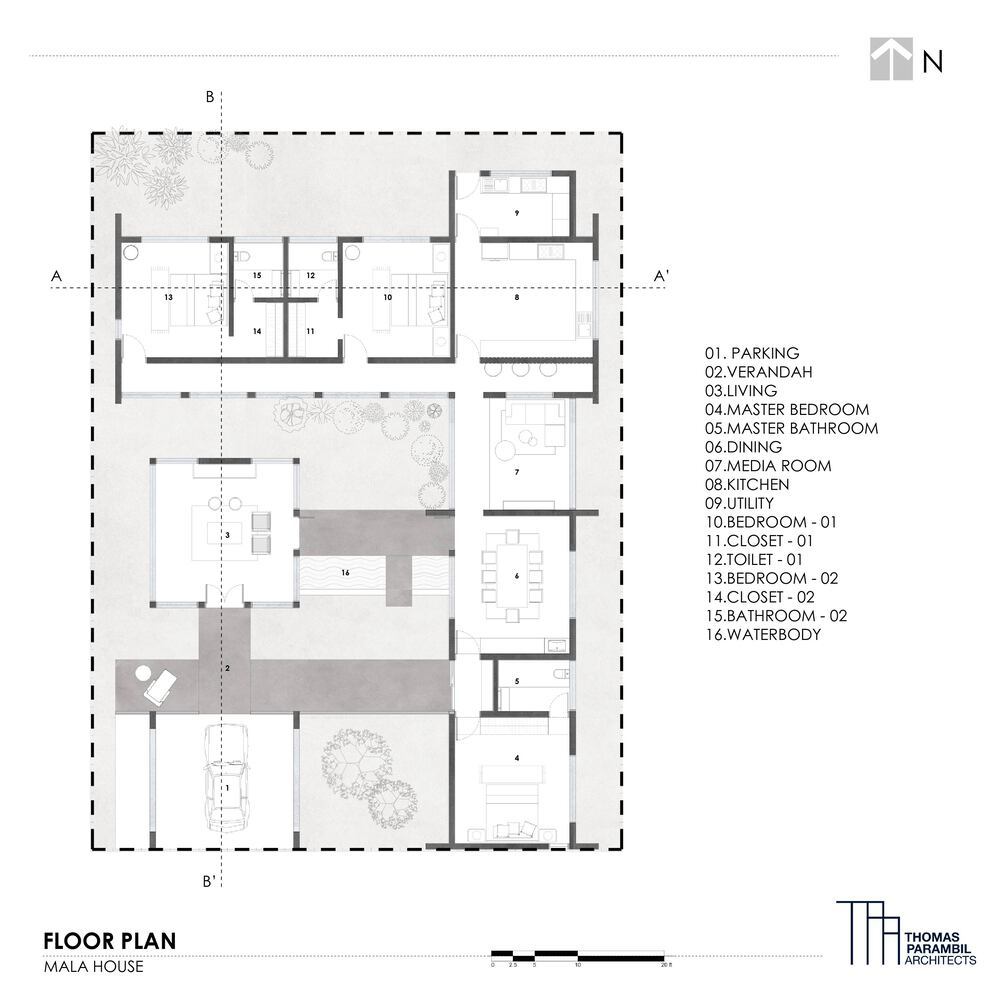
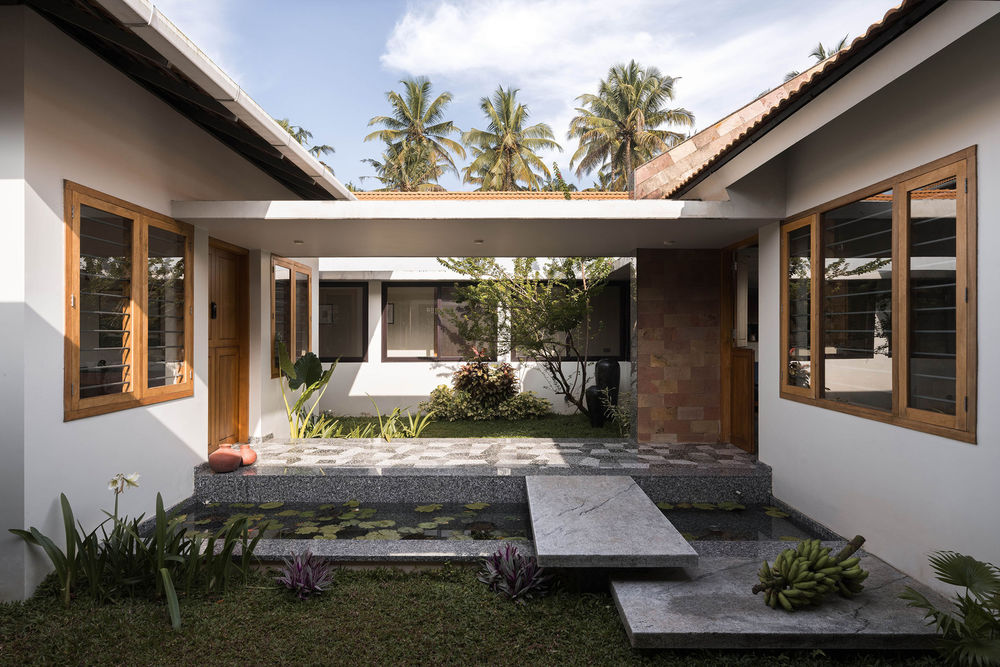
The spatial articulation and formalization are birthed in nostalgia and the simple, outdoor-oriented lifestyle of the people who call
their home. On the property, which has been with the family for several years, stands an ancestral home — tharavad in local parlance — now in ruins. But the client’s pleasant memories associated with a similar venerable structure — his grandparents’ home — were evergreen and made a powerful driver when making a new home for his parents. This became the inspiration for Mala. However, instead of mindlessly appropriating the traditional typology, the design response abstracts this brief to arrive at an articulation that, while animated with a traditional spirit, is geared towards an easygoing, simple, and wholesome modern lifestyle.
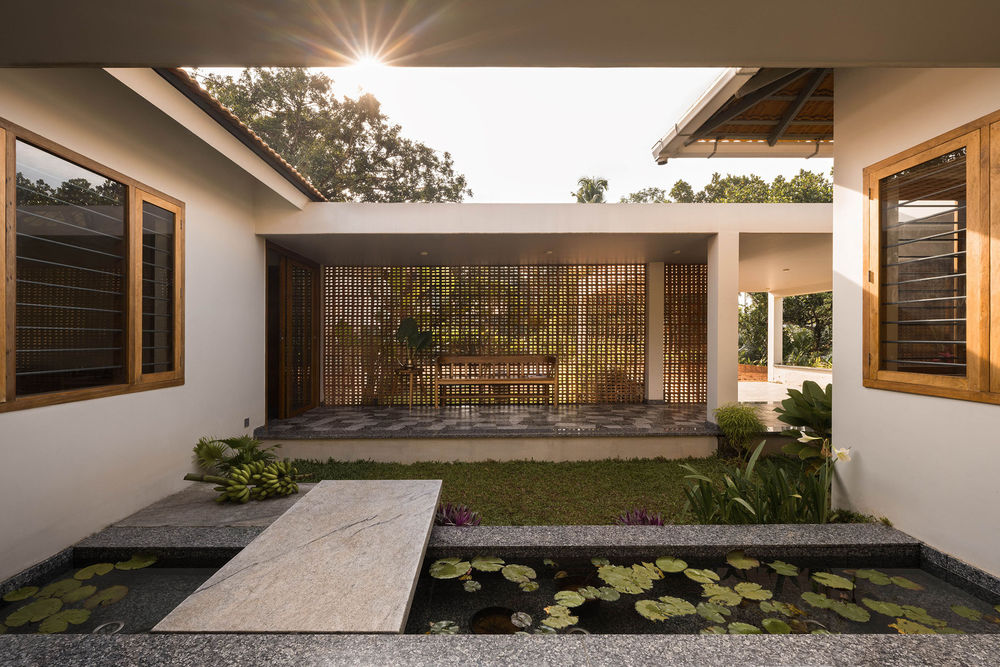
With its courtyards, long corridors, verandahs, and a combination of high and low ceilings, the program constantly refers to the anatomy of a nalukettu (traditional Kerala home) — but these vernacular elements are woven together to create a fresh and engaging environment. The roofline sees the pairing of flat-slab and pitched forms, giving rise to visually and spatially interesting and dynamic forms. The built form takes the shape of a C, with an open north face that allows the creation of a larger courtyard and facilitates the ingress of natural light into all the rooms. Surrounded by verdure and attended by soothing waterbody, a living room sits within this green heart.
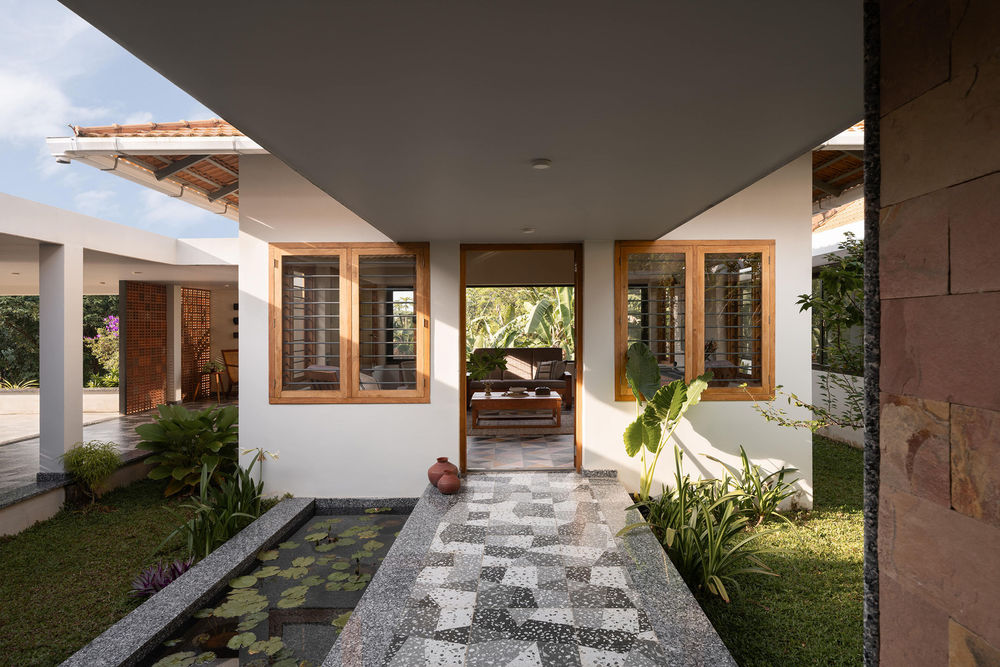
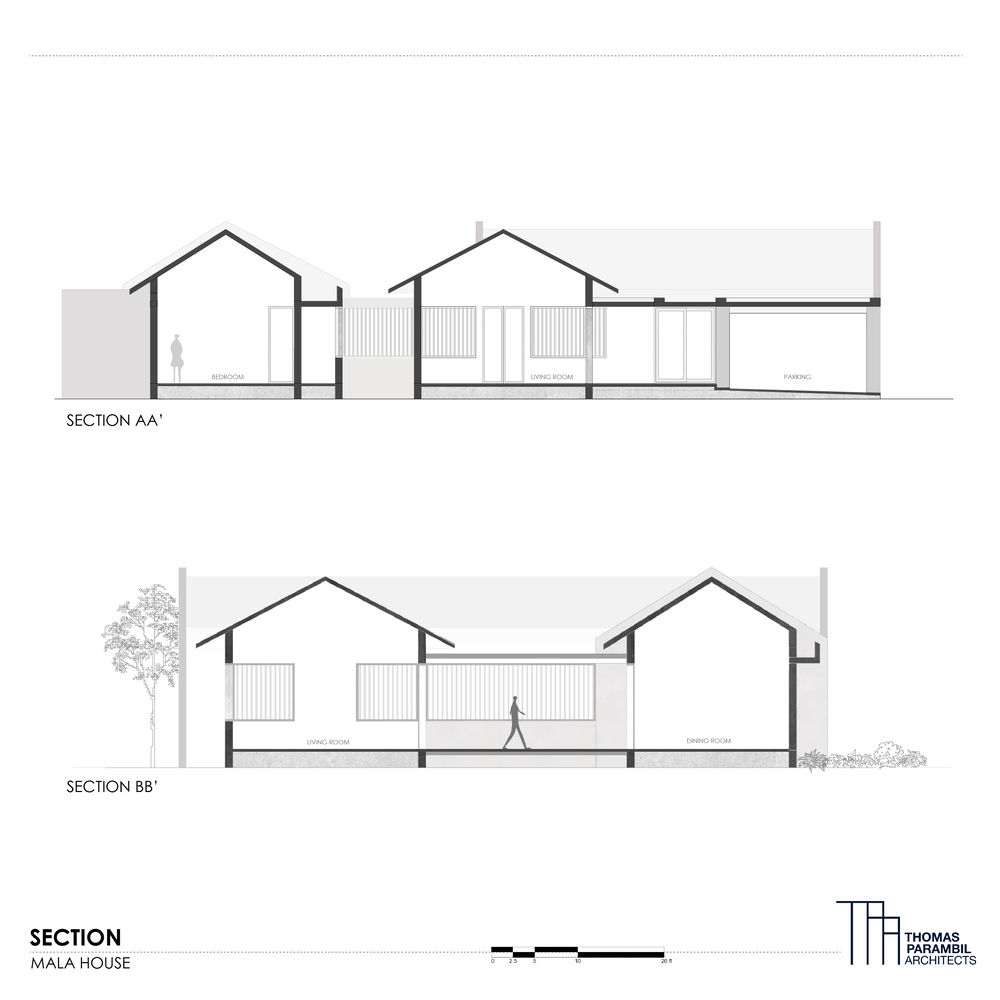
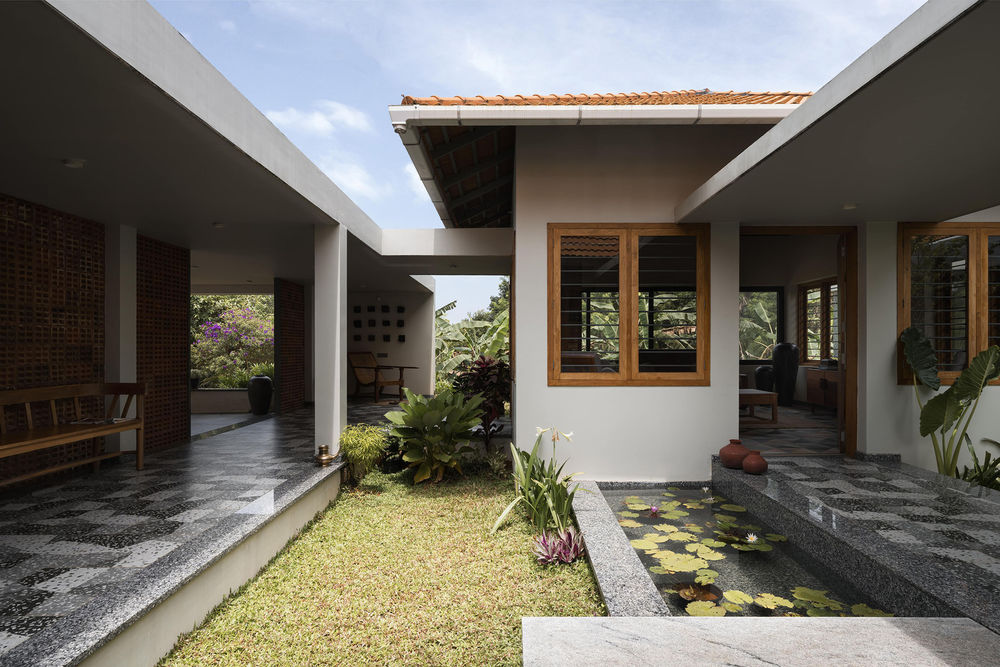
In deference to the region’s tropical climate, functionalities are set behind or linked by semi-open verandahs. The one to the west features a sculptural terracotta jaali brise soleil, which, besides helping to take the edge off the harsh west light, creates a striking chiaroscuro that energizes the spatial quality. Collectively, the verandahs, the jaalis, and the courtyards (created within the interstitial spaces of the built-form) make a living at
more about the outdoors than the indoors. Materiality amplifies the rootedness of this home. Laterite found plentifully in the region, is used for the foundation, walls, and terracotta roof tiles. Inside, terrazzo and timber continue the natural language determined by the architectural envelope. Mala serves as a spatial memorial and tribute to the land and its traditions but in a distinctly modern way.
